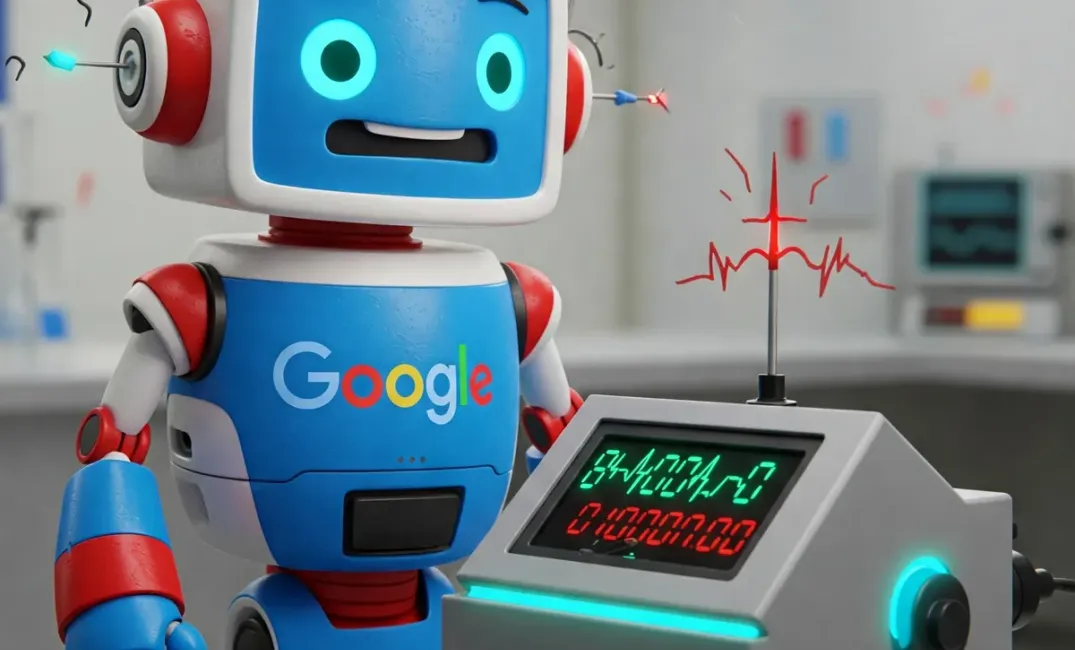Table of Contents
Is Your Smart Speaker Spreading Misinformation? The AI "Error Corrector" That Could Change Everything
Imagine relying on AI for important tasks – getting medical insights, understanding complex data, or even just figuring out the best route to your destination. Exciting, right? But there’s a hidden problem: today’s AI, while incredibly powerful, often confidently states things that are simply… wrong. They "hallucinate" facts, misinterpret data, and can sometimes be convincingly incorrect. It's like having a brilliant assistant who occasionally makes things up – not exactly ideal when you need accuracy.
This “hallucination” issue is a major roadblock to truly trusting AI. But a groundbreaking new research paper from Google DeepMind offers a powerful solution: teaching AI to self-correct. Their innovation, called SCoRe (Self-Correction via Reinforcement Learning), is essentially giving AI a built-in “error corrector,” empowering it to critically examine its own outputs and dramatically boost its reliability – especially for complex reasoning.
Beyond "Sounding Smart": Why AI Needs to Check Its Work
Why do these sophisticated AI models invent facts? It's because current training often prioritizes fluency and sounding plausible. AI learns to generate text that resembles correct information, but not necessarily to rigorously verify its accuracy or understand the nuances of truth.
Think of it like teaching someone to navigate solely by landmarks. They might become good at following general directions, but they won't necessarily understand maps, compasses, or – crucially – how to re-orient themselves when they get lost or realize they've made a mistake.
Existing attempts to improve AI accuracy are often band-aid solutions: feeding them more data or using filters to catch errors after they happen. But these don’t fundamentally teach AI to internally check and revise its own thinking process. We need AI that can be its own best critic.
SCoRe: Building an Internal "Revision Engine"
The researchers behind SCoRe realized we need to equip AI with an internal “revision engine.” SCoRe uses reinforcement learning, a powerful technique where AI learns through trial and error, guided by rewards. But SCoRe is uniquely designed to reward the process of self-correction itself, not just getting the final answer right.
Here’s how SCoRe works its magic as an "error corrector":
- Learning to Revise in Rounds: SCoRe trains AI to think iteratively, like a scientist refining a hypothesis. The AI generates an initial attempt, then actively re-examines it, identifies potential flaws, and revises in a second (or more) round. This mirrors the human process of drafting, reviewing, and editing.
- Two-Stage Training for Robustness: SCoRe uses a clever two-stage strategy. Stage One encourages the AI to simply make revisions – to break free from sticking with its initial output and explore alternative solutions. Stage Two then focuses on rewarding revisions that demonstrably lead to better answers – answers that are more accurate and closer to the truth.
- Rewarding "Progress Towards Truth": The key innovation is SCoRe's reward system. It doesn't just give points for the final correct answer. It awards points for demonstrating self-correction behavior – for making revisions that show an understanding of errors and a drive towards greater accuracy. This focus on “progress towards truth” is what truly teaches AI to be a reliable “error corrector.”
The Dawn of More Reliable AI: Less "Fake News," More Real Help
The potential of SCoRe is transformative, promising a future with more dependable AI, particularly for tasks requiring careful reasoning. Imagine:
- More Trustworthy Smart Assistants: Smart speakers and chatbots that become genuinely reliable sources of information, far less prone to making up facts or giving misleading answers.
- Safer AI for Critical Decisions: AI tools in fields like medicine, finance, and law that are demonstrably more accurate and less prone to errors in high-stakes situations.
- Stronger Building Blocks for Advanced AI: SCoRe provides a crucial step towards more robust and capable AI systems that can tackle increasingly complex challenges, as their reasoning becomes more reliable.
From "Sounding Smart" to "Being Accurate": The SCoRe Shift
The challenge of AI "hallucinations" is significant, but SCoRe offers a powerful and promising path forward. It represents a fundamental shift in AI training, moving beyond simply chasing fluent-sounding outputs to prioritizing accuracy and reliability through built-in self-correction. As AI becomes more deeply integrated into our lives, from everyday tasks to critical decisions, the ability for these systems to reliably correct themselves will be essential for building trust.
SCoRe isn't just a technical trick; it's a step towards a more honest and dependable AI future. It’s about creating AI that not only generates information, but also critically evaluates and refines it, making it a more reliable and genuinely helpful partner in navigating an increasingly complex world. And that's an advancement we can all trust.

